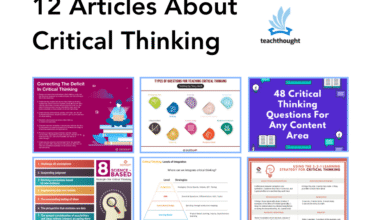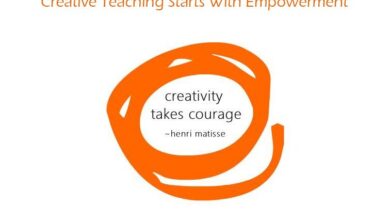The Learning Pit Concept Explained

Created by AI in Riverside. Checked by a human. Mistakes possible. Please contact me if you find one.
Transcript
Transcript
Vicki Davis (00:01)
I’m so excited to have James Nottingham with us. He is the creator of the Learning Pit. It’s one of the most widely used illustrations of learning to have emerged in the last 20 Now he has worked closely with professors Carol Dweck of the Growth Mindset and John Hattie of Visible And I know those are two that so many of us know as well. He’s been teaching a lot. You have your 12th book out, which is called,
Teach Brilliantly. So that’s a lot of books, James, and thanks for coming on the show.
James Nottingham (00:34)
It’s an absolute delight to be with you, Vicki. Thanks for the invitation.
Vicki Davis (00:38)
Okay,
so let’s talk about this illustration, the learning describe it to us and help us understand it.
James Nottingham (00:47)
So if you do a search online, you will find literally millions upon millions of references and illustrations of it. I created it in the 90s because my students, they had the sense that success should be relatively straightforward. And if it was easy, then that’s the best thing. And if it wasn’t easy, then either that’s their fault.
or maybe it’s my fault I hadn’t explained things properly. And I wanted students to know that, you know what? Most of the time, success comes from going through all sorts of challenges, stepping out of your comfort zone, being willing to persevere, being willing to collaborate and problem solve and so on.
So a good example is I ask students, just will you write down your name now on a piece of paper? And of course they do it quickly. And then I say, so switch hands and now write it again. And once they’ve done that, I say to them, how much more did you have to concentrate? How much more effort did you have to put in the second time around? And now look at the results.
The second one is almost certainly going to look worse than the first one. And a lot of people don’t like that. They don’t like that feeling of effort. They don’t like the outcome. And so a lot of people avoid it. And yet, that’s learning. Learning requires us to step out of our comfort zone. Learning requires us to try things that we don’t.
know how to do or try the same thing but in a different way and all too many students and indeed adults avoid that because they think yeah it’s too hard and yet we know. I mean Pedagogy 101 is you have to step out of your comfort zone to make good progress, to expand your knowledge, your skills, your
Vicki Davis (02:50)
Mm.
James Nottingham (03:06)
your attitudes, you have to. And so the learning pit describes that, it illustrates the path rather than taking one step then the second and then third then the fourth and hey presto, you’re successful. It is you take one step, you take a second step and then you get worse before you get better. And I’m not trying to scare anybody here, I’m trying to prepare them. You know, that idea of forewarned is forearmed. I’m…
Vicki Davis (03:08)
Mm-hmm.
Hmm.
Right.
James Nottingham (03:35)
better prepared if I know that I’m likely to get worse before I get better. And so the illustration shows them that. And then I use the language, the learning pit, to be student friendly, to demystify this. I tried all sorts of things. I talked about Vygotsky’s own approximate development. I mean, most of my, you know, exactly, exactly. The kids are like…
Vicki Davis (04:00)
I’m sure that went over really well
James Nottingham (04:04)
So I needed to find a way and you know how it goes, Vicki. I mean, you come up with these ideas, you share them, and you just don’t know if they’re going to hit the sweet spot or whether they’re going to be wider than mark. And it seems that the learning pit has caught a life of its own to the point that, as I say, if you do a search online, and you get millions upon millions of illustrations, and it’s lovely.
Vicki Davis (04:30)
Mm-hmm.
James Nottingham (04:34)
But it’s slightly weird that I created it in my classroom teaching grade five kids. And Now Look is everywhere.
Vicki Davis (04:39)
Yeah.
James Nottingham (04:42)
Vicki Davis (04:42)
So you’re saying that you’re teaching kids that learning is hard and sometimes when you start learning something, you fall in a pit and it gets a little harder and then you have to climb out and then that you journey towards that learning goal.
James Nottingham (04:58)
Absolutely, that’s in a nutshell exactly what I’m saying. Now the evidence behind it is if you look at, for example, Robert Bjork’s work from University of California, he talks about desirable difficulties and he’s so much evidence to show that the harder we have to think about something, the more we have to put effort into learning something.
the more likely we are to be able to retrieve that information and that learning when we need it next time. Whereas easy come, easy go. And, you know, it’s all of those sorts of ideas really wrapped up.
Vicki Davis (05:43)
Right. So I always talk to my students about the productive struggle required to learn and that if it’s easy, you’re probably not learning. Like if you already come into it and you make you know, we use one hundred in the U.S. So you’re already at one hundred. And what have you learned because you already knew it. So you have to start from somewhere now. OK. So I know this reminds me of.
James Nottingham (06:01)
Absolutely.
Vicki Davis (06:08)
And when I’ve talked to Chris DeDe and he talked about web quests and he would look at it and he would go, Oh, they’re getting it wrong in certain cases. So are there ever times that when you do that Google search and you look and you’re like, okay, this is not what I was saying at all. What are the common misunderstandings about the learning pit?
James Nottingham (06:26)
I have found, funnily enough, quite often in the US, particularly, people have kind of heard of the learning pit. And then some have assumed it’s something to avoid. you know, exactly, exactly. So that was the biggest misconception. And yes, listen, I don’t want to be challenged all the time. Of course I I want, sometimes, I want things to go very easily.
Vicki Davis (06:41)
Oh, ha ha! Avoid the learning
James Nottingham (06:56)
But if I’m in a learning situation, I know I’m going to need to step out of my comfort And so, which, no, we’re not trying to avoid it. We’re trying to seek it out. Because the more you go through it, the more likely you are to develop agency or efficacy, that sense that I’ve got this, I can do this. I’m capable of doing this again and again and again. And the second…
Vicki Davis (07:02)
Yeah.
Mm-hmm.
James Nottingham (07:27)
part that I would look out for and it’s a smaller thing but quite a lot of people draw the pit where it starts and finishes at the same height. Now I didn’t used to worry about that but one of my children is autistic and his classic approach is well dad what’s the point? Why would you go through all of that effort just to end up at the same point? And I’m thinking
Vicki Davis (07:50)
Mm-hmm.
Ah.
James Nottingham (07:55)
Yeah, okay, I see where you’re coming from. So when drawing the pit, I always advocate that people finish it higher than it begins. So you go in at a lower level, you go into the pit, and when you come out, you come out with a better, a higher sense, if you will, of what it is that you’ve been doing.
Vicki Davis (08:04)
Yeah.
So when your students think back to when you started using this illustration with your fifth graders, when you started using this illustration, do they have questions? Is there sort of a secret to you? You’ve already talked about how you have them right with a left hand, and I’m sure that’s part of your illustration. But how would a fifth grade teacher share this with his or her students?
James Nottingham (08:30)
Hmm.
So there’s lots and lots of resources that you can access. The best starting point is you go to the website learningpit.org, O-R-G, learningpit.org. If you visit that, right on the homepage, there’s an animated video that is me talking and then some very clever person is animating.
Vicki Davis (08:49)
Mm-hmm.
James Nottingham (09:06)
an illustration of the pit and I explain it. It works pretty well for higher elementary and middle schools particularly, as in that video does. The learning pit works for any age. If you think that students ought to be challenged and you want them to be willing to step out of their comfort zone and have a better sense of what’s coming then the learning pit.
Vicki Davis (09:15)
Okay. Right.
James Nottingham (09:35)
can work. So that’s the first resource. The second one, you kindly mentioned the books that I’ve written. My most recent one, Teach Brilliantly. I’ve put a section in there where I’ve given, I’ll call it a script, but don’t think of it as an actor’s script. It’s just here are the key points that I generally make when introducing the learning pit to my students. And so that’s a good resource to start with.
Vicki Davis (10:02)
Well, I like the illustration because it is how it feels. Of we have to know that very often, it’s, you know, when you start learning something, it’s not that you fall into a pit, it’s that you realize that you’re in the because you don’t know what you don’t And that is the challenge with students they, when you introduce a new topic, sometimes they’ve never even heard of that topic. So then when they start grappling in with it, they realize, oh, I have a knowledge deficiency and we need to make this climb. So it’s not.
a negative thing. It’s not don’t fall into the pit. It’s like, okay, you’re learning. You’re in a pit, we got to climb out and it is a challenge.
James Nottingham (10:41)
Absolutely right. So ordinarily if we take the cognitive part of learning rather than the physical, take the cognitive. Typically you start with one or two ideas or let’s say you show me how to use all this recording equipment and I watch what you’re doing and I feel safe because I’m with you, you’re the expert, you’re guiding me through and you’re
you’re helping me bit by bit by bit. So it feels straightforward. But then you say, right James, you’re on your own now, go try it. And I forget something. And it looked straightforward when you demonstrated it, but I’ve forgotten something. Or I’ve come across some sort of contradiction or complication where I’m thinking, okay, but should I have done it this way or should I have done it that way?
Vicki Davis (11:14)
Ha ha.
James Nottingham (11:35)
And a lot of times when that happens, people think, oh, this is not for me. They give up really quickly. Whereas if they say, well, this is naturally what happens in learning. And what I need to do is just go back a step and think, right, so what were the instructions that Vicki gave me? Or who else could I collaborate with? Or maybe I’ve got all the right parts, but they’re not in the right order. So I need to think about sequence. So this is part of being in the learning pit.
Vicki Davis (12:00)
Mm-hmm.
James Nottingham (12:04)
And similarly, if you take a physical thing, you show a skill and you get them practicing, but then they go and try it themselves, and either it doesn’t feel quite as smooth as it did, or it felt really straightforward, but now they’re trying to tweak it and make it work inside a game, for example, or with a different group of people, and that’s when it gets all very frustrating.
and I want students to know that is normal. It’s not you, it’s not you that doesn’t know it. It’s not you that are struggling alone. It is everybody. That’s what happens when we step out of our comfort zone. And there are things that we can do to work our way through. And I think the most important point about the learning pit is it’s not about being in the pit that is the benefit. It is about learning to go through.
Vicki Davis (12:39)
Mm-hmm.
Yeah.
James Nottingham (13:02)
the pit and out the other side. That’s where the benefit comes.
Vicki Davis (13:06)
The journey, the journey of learning. So this is an excellent example. I think this is going to be a great resource for college professors and teachers to listen to this overview. Go to the learningpit.org. I’m definitely going to dig into that video. I teach middle schoolers and I have some, I’m teaching website design and there’s a little bit of a productive struggle or climbing.
through the learning pit going on right now. So I think that example will be great for my students. And the new book, his 12th book is Teach Brilliantly, published January, 2024 about how to create optimal conditions in which all students can thrive. Thank you, James, for coming on the show.
James Nottingham (13:52)
Thank you, Vicki. And the book is published by Solution Tree. You can check that out. It’s in Bloomington, Indiana. Find it online.
Vicki Davis (14:00)
Excellent.



